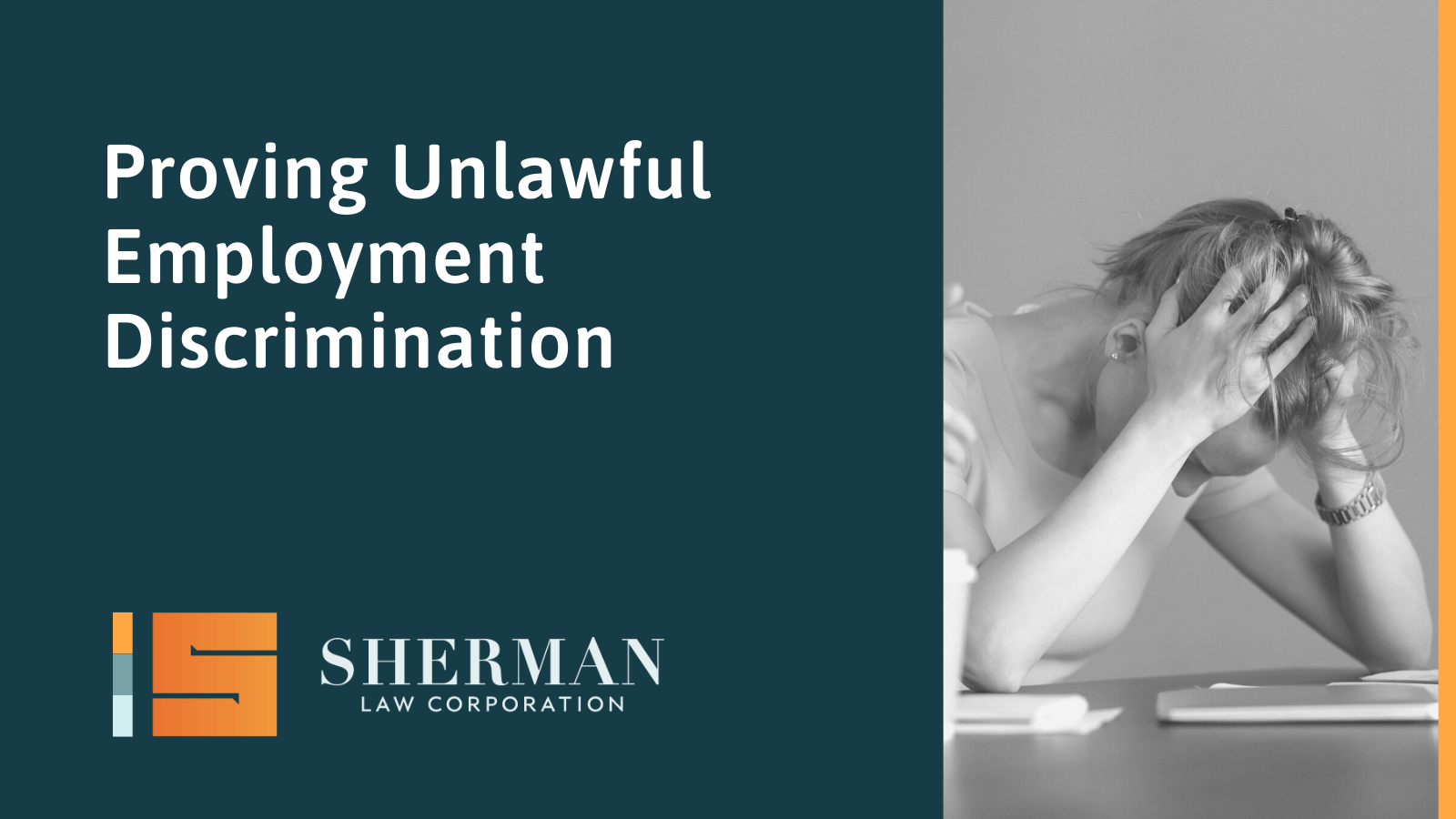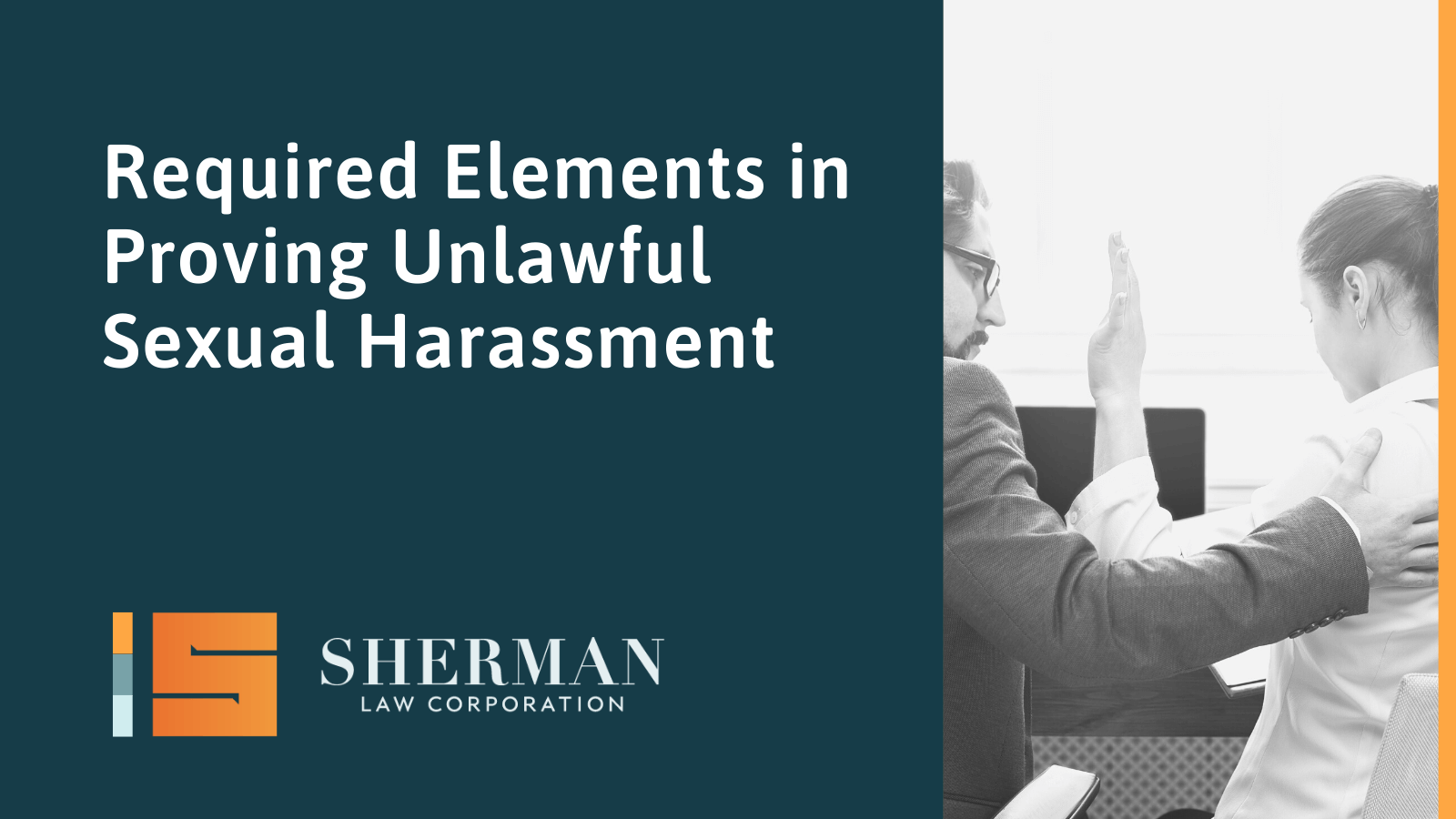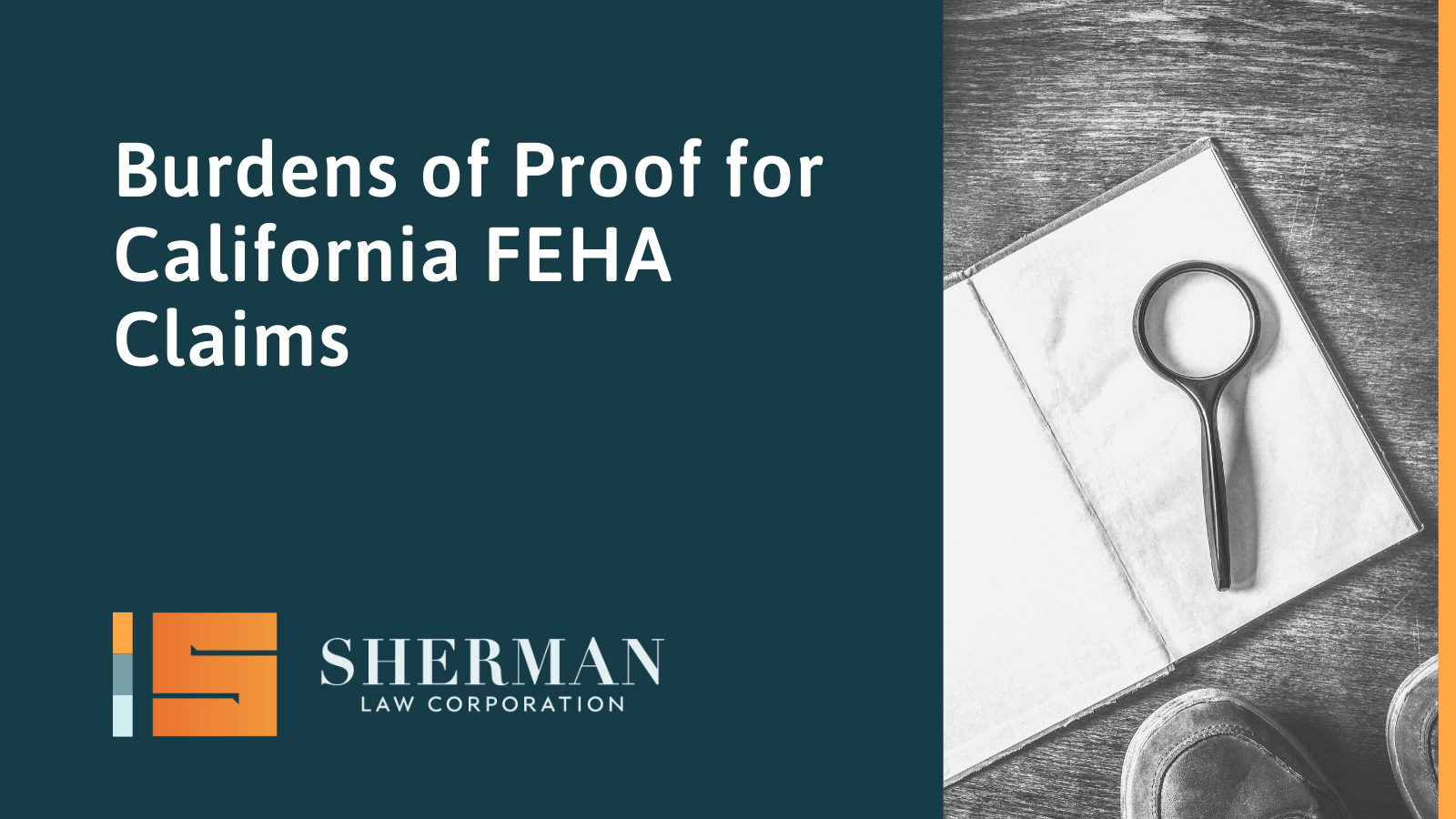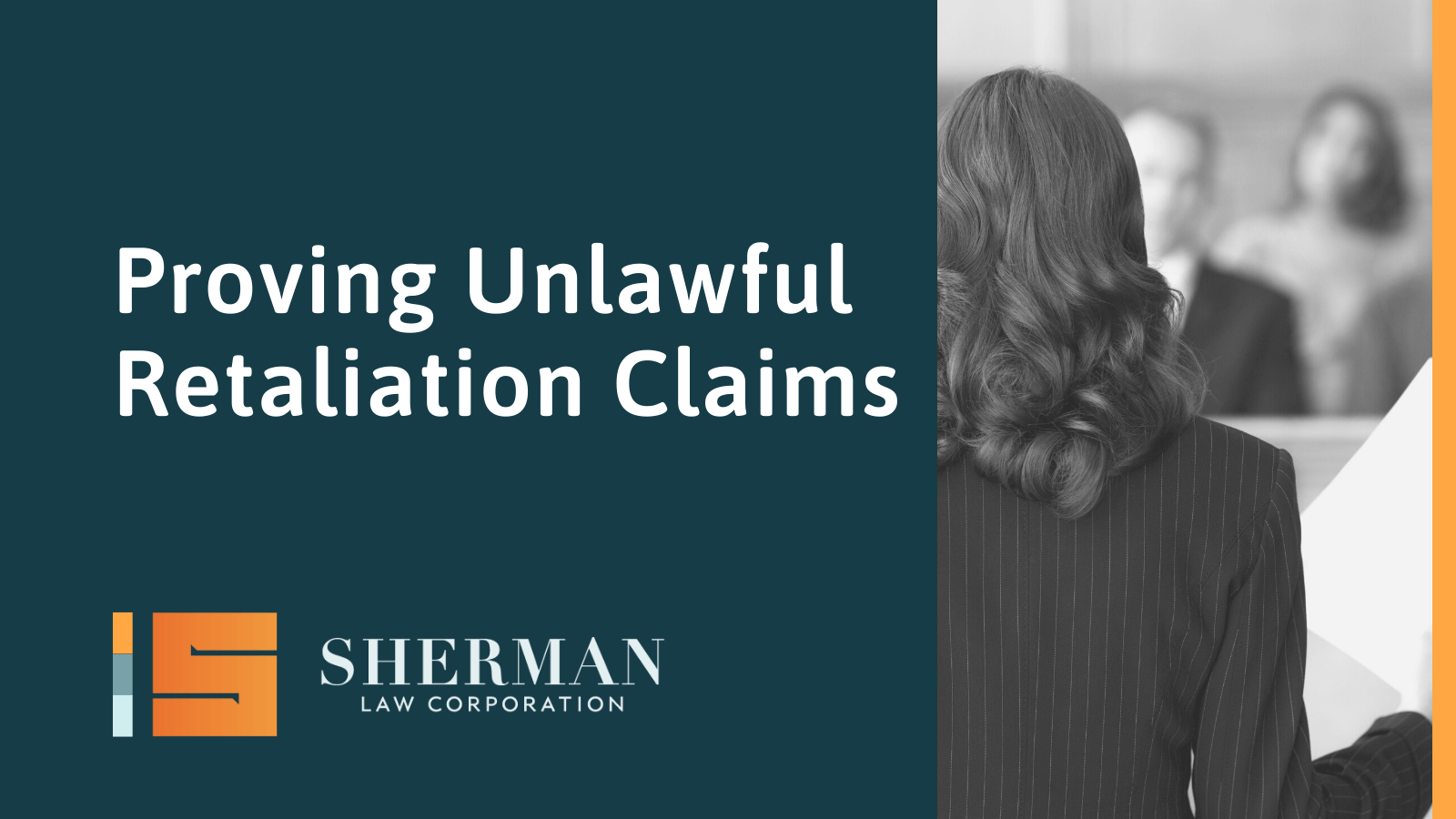
In civil cases, a California complainant (applicant/employee) must prove unlawful discrimination claims by a preponderance of the evidence – which is a feather more than 50%.
In this blog, California employment attorney Lisa Sherman explains how complainants work to prove these types of claims, and the responsibilities of employers in these types of situations.
Prima Facie Case
The complainant first has the burden of proving what is called a “prima facie case” of discrimination (not a hard hurdle to overcome).
The prima facie case requires the complainant to prove that:
- s/he is a member or perceived to be a member of a protected class;
- s/he is qualified for the position sought or performing competently in the position held;
- s/he suffered an adverse employment action, such as termination, demotion, or denial of an available job; and
- some other circumstance suggesting a discriminatory motive (a very low standard), which can be based on inference.
Non-Discriminatory Reason
Once the complainant pleads a prima facie case, the burden of proof shifts to the employer to state (not prove) a legitimate non-discriminatory reason for the adverse employment action taken.
The burden then shifts back to the employee, who must provide “significant substantial evidence of pretext.”
This is where most employment cases fall short and can result in dismissal by a dispositive motion filed by the employer.
Pretext
Pretext is established by the complainant in one of 2 ways:
- By directly persuading the court that a discriminatory reason more likely motivated the employer, or
- By indirectly showing that the employer’s stated legitimate, non-discriminatory reason is unworthy of credence (i.e., not to be believed).
If a complainant uses circumstantial evidence to satisfy this burden, such evidence “must be specific” and “substantial.”
Types of Evidence to Prove Pretext
A complainant in this situation cannot simply show that the employer’s decision was wrong, mistaken, or unwise.
Rather, the complainant must demonstrate such weaknesses, implausibility, inconsistencies, incoherencies, or contradictions in the employer’s proffered legitimate reasons for its action that a reasonable fact finder could rationally find them not believable and therefore infer that the employer did not act for the stated non-discriminatory reasons.
Assertions and conjecture that an employee had a discriminatory motive will not establish pretext.
Causal Link
Finally, the complainant’s evidence must relate to the motivation of the decision-makers to prove, by non-speculative evidence, an actual causal link between prohibited motivation and the adverse employment action.
Employers typically produce evidence showing that the complainant does not meet some bona fide occupational qualification that another applicant has, or that the employee has violated some legitimate work rules or standards of conduct warranting adverse employment action, or that the employer otherwise had a legitimate business need for the adverse action taken, other than because of the protected characteristic.
Regardless of proof, an employer is legally obligated to investigate any claims of discrimination that if non-compliant is often used to show pretext to defeat employer’s dispositive motions.
Contact Lisa Sherman, California Employment Lawyer Today
Lisa Sherman knows that workplace disputes are more complicated than they appear at first glance. Her 26 years of experience defending employers throughout California has led her to think outside the box for cost-effective solutions – saving her clients from the frustration of lengthy and expensive lawsuits without results.
For more information on evidentiary proof in unlawful employment discrimination claims in California, feel free to contact our office at 323-488-2087.




